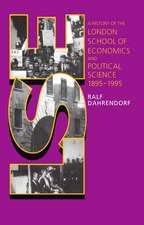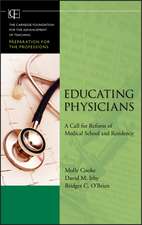Access to Higher Education: Understanding Global Inequalities: Teaching and Learning
Autor Graeme Athertonen Limba Engleză Paperback – 20 dec 2016
Preț: 262.79 lei
Preț vechi: 338.99 lei
-22% Nou
Puncte Express: 394
Preț estimativ în valută:
50.29€ • 52.63$ • 41.85£
50.29€ • 52.63$ • 41.85£
Carte tipărită la comandă
Livrare economică 31 martie-14 aprilie
Preluare comenzi: 021 569.72.76
Specificații
ISBN-13: 9781137411891
ISBN-10: 1137411899
Pagini: 240
Dimensiuni: 138 x 216 x 24 mm
Greutate: 0.3 kg
Ediția:1st ed. 2017
Editura: Bloomsbury Publishing
Colecția Bloomsbury Academic
Seria Teaching and Learning
Locul publicării:London, United Kingdom
ISBN-10: 1137411899
Pagini: 240
Dimensiuni: 138 x 216 x 24 mm
Greutate: 0.3 kg
Ediția:1st ed. 2017
Editura: Bloomsbury Publishing
Colecția Bloomsbury Academic
Seria Teaching and Learning
Locul publicării:London, United Kingdom
Caracteristici
Offers a truly global approach to access, with case studies from twelve different countries across every continent
Notă biografică
Graeme Atherton is Head of AccessHE and Director of National Education Opportunities Network, UK. He has been active as a researcher, practitioner and manager in the field of widening access to higher education since 1995. He is also Visiting Professor in Higher Education and Social Mobility Practice at London Metropolitan University and has spoken in over ten countries on widening access including Australia, the USA and Canada.
Cuprins
Introduction1. Canada: Access at the Crossroads; Diana Wickham2. Marching in the rain: The TRIO Programme and the Civil Rights Legacy in the US; Ngondi Kamatuka3. Access and Retention in Higher Education in Colombia: The Case of the Children's University EAFIT; Isabel Cristina Montes Gutierrez and Ana Cristina Abad4. Changing a Mindset: How Germany is Trying to Combine Access and Equity; Julia Mergner, Shweta Mishra and Dominic Orr5. Extending Equity in Higher Education in an Equitable Society: The Finnish Dilemma; Ari Tarkiainen6. United Kingdom: The Access to Higher Education Nation; Graeme Atherton7. Realities and Aspirations: How Access to Higher Education is Contributing to Nation-Building in Malaysia; Glenda Crosling, Mien Wee Cheng and Ruma Lopes8. Expanding Higher Education in India: the Challenge for Equity; Manasi Thapliyal Navani9. National Access to Policies for Higher Education in China: Creating Equal Opportunities in Education; Baocun Liu and Yang Su10. Access to Higher Education in South Africa: Addressing the Myths; Ncedikaya Magopeni and Lullu Tshiwula11. Making Commitment Concrete: Policy and Practice in Access to Higher Education in Ghana; Joseph Budu12. Evolution or Revolution: The 3 Ages of Access in Australia; Margaret Heagney and Fran FarrierConclusions: The Age of Access.
Recenzii
Highly informative and thought provoking. For readers seeking an anchor text for a comparative systems of higher education course, this is the perfect choice.
In this book, higher education experts and researchers in 12 countries throughout the world examine how access is being addressed. They portray a picture characterised by contrast and commonality, highlighting the importance of socio-economic structures, national identity and cultural context to understanding access.
The book provides a panorama of policy examples. The contributing papers provide insight from within; each author chronicles examples from their own country, describing policy initiatives situated within context . It is highly informative and thought provoking. For readers seeking an anchor text for a comparative systems of higher education course, this is a perfect choice.
In this book, higher education experts and researchers in 12 countries throughout the world examine how access is being addressed. They portray a picture characterised by contrast and commonality, highlighting the importance of socio-economic structures, national identity and cultural context to understanding access.
The book provides a panorama of policy examples. The contributing papers provide insight from within; each author chronicles examples from their own country, describing policy initiatives situated within context . It is highly informative and thought provoking. For readers seeking an anchor text for a comparative systems of higher education course, this is a perfect choice.






















